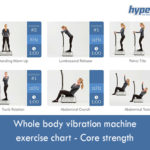
Healthy blood circulation ensures better delivery of nutrients and oxygen to cells, as well as higher energy levels. Also, it contributes to the removal of toxins from the body, preventing the buildup of debris in cells and maintaining a stronger immune system.
Impaired blood flow, on the other hand, can affect your body temperature, leading to cold feet and hands, and can leave you tired and unable to perform at your maximum capacity. A person with poor blood circulation is likely to also have problems with the lymph flow, and thus to retain water and suffer from leg swelling, puffy eyes and other such symptoms.
Moreover, poor circulation favours the accumulation of lactic acid in the muscles, causing cramps and aches. When muscle damage occurs due to physical activities, a healthy blood and lymph flow ensures the proper oxygenation and removal of lactic acid, speeding up the recovery.
Unfortunately, office jobs, refined foods, prolonged sitting, smoking and uncomfortable shoes can all affect the flow of blood, leading to congested areas and decreasing our health level in a more or less significant manner. Some of the factors that affect circulation can’t be prevented or avoided – aging is one example, but lots of the causes of impaired blood flow can be eliminated with simple lifestyle changes.
People who spend a lot of time sitting are more likely to have circulation problems, but even those who have active jobs can experience cold feet and fluid retention as a result of impaired blood flow if they choose tight-fitting clothes and uncomfortable shoes.
High heels are great for parties and special occasions, but for day-to-day activities, opt for shoes that don’t put unnecessary pressure on the blood vessels in your feet and that allow you to maintain good posture when standing or sitting. Shoes with low heels or flats are better options as they make the calf muscles work harder and push the blood from the lower body towards the core and upper body in a more efficient manner.
As for clothes, you should choose items that aren’t too tight around your waist, legs or groin area, and that allow you to breathe normally. Compression stockings can be a good solution as well as they put steady pressure on your legs, supporting the circulation of blood back to the heart.
Massaging the painful and swollen body areas where the blood vessels are compressed can help in restoring the normal flow of both blood and lymph. Before any other procedure, you can start with a gentle massage targeting the area at the back of your knees, then continue with your feet and legs. The squeezing and pulling of the muscles facilitates circulation and helps the blood move through the congested areas, so the flow can be restored.
If you’re too tired for a self-massage or aren’t flexible enough for this solution, you can always use a whole body vibration machine for enhancing circulation. Simply stand or sit with your feet on the vibrating platform, or place an aerobic step in front of the machine and lie on the step, with the hams or quads on the platform.
Both cardio and weight lifting are good for stimulating the blood flow, as they increase the activity of muscle fibers, and each contraction pushes the blood through the vessels. If you have a sedentary job, start your workouts with stretching and small exercise for 2-3 minutes, to warm up the muscles and joints and avoid injuries. Then, get the blood pumping with activities like running, swimming, biking, weight lifting or pilates.
If you’re using weights, start lighter and increase the intensity progressively, so as to allow your body to adapt to the increasing resistance. Or, if you’re not into weight lifting but want to add strength exercises to your routine for better circulation, step on your WBV machine and set the frequency and amplitude to a level that feels comfortable.
Cayenne, tumeric, ginger, garlic, as well as oranges and other fruits rich in vitamin C, should be part of your diet if you have poor circulation. Adding herbs as Ginkgo biloba has also been shown to improve blood flow by opening up the blood vessels and improving the fluid’s composition.
Applying hot packs for a couple of seconds, then switching to cold packs, or alternating warm with cold water when showering, is a good strategy for improving circulation naturally.
The hot compresses open up the blood vessels, increasing the flow and the delivery of oxygen to the tissues. This relaxes the sore muscles, decreases spasm and alleviates pain while improving the flexibility of ligaments and tendons. As for cold packs, they reduce inflammation and pain, slowing circulation, so they’re great for reducing swelling and pain.
Know other strategies for improving circulation naturally? Comment below or join our Facebook community and share your thoughts with us!

Updated on: 08.09.2021 The lymphatic system is involved not only...

Stress can make you gain weight – we’ve heard this...

Various theories exist to answer this question. As you will...

Both rebounding and jumping on a trampoline are excellent ways...

Our series of whole body vibration machine exercise articles continues...